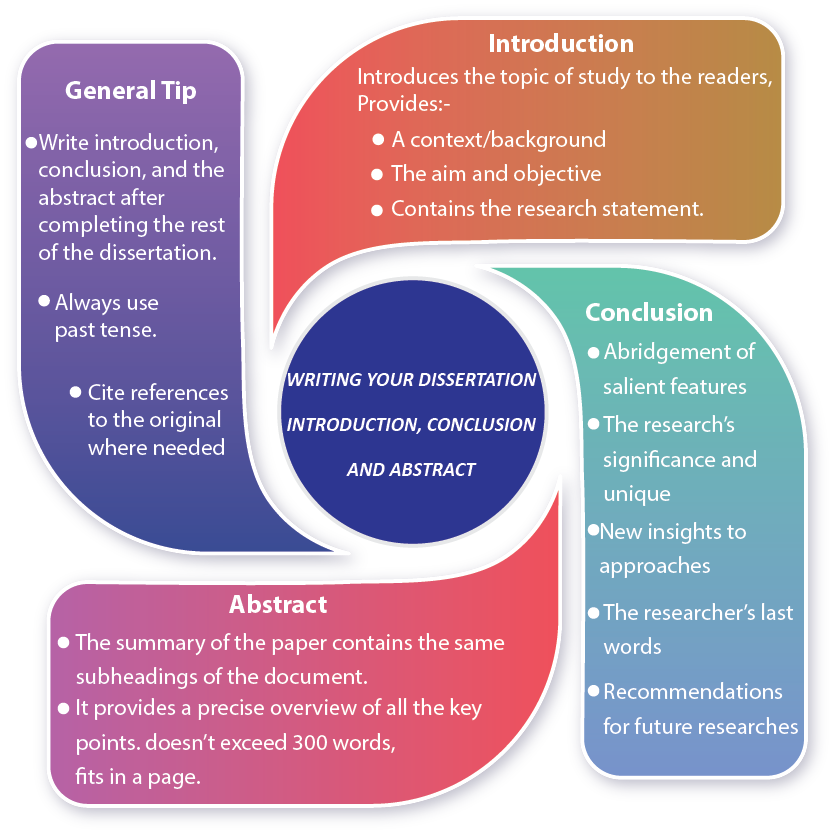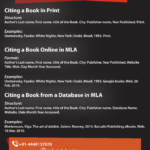Writing Your Dissertation Introduction, Conclusion and Abstract
The dissertation is a unique document produced to obtain a degree, consisting of a detailed study into a specific area of interest to the researcher that adds to the existing knowledge in the field of study and value of the academia, in general. It is the final document submitted by the candidate before obtaining a Masters or Doctoral degree. In case of PhD, the researcher inquires on a research gap in their field of study and provides the details of the research, its result, inference, the methods used in the process in their dissertation.
A dissertation consists of many headings and sub-headings. The usual components are Abstract,
The abstract, introduction, and conclusion Introduction, Literature review, Methodology, the Results, Discussions, conclusion.
of a dissertation do not include information on the process involved in the research and its inference. Hence, it can be said that the remainder of the three forms the main body of the dissertation. As such, usually, the rest of the thesis is written before the three.
Introduction:
Introduction introduces the research to the readers. It provides a first impression along with the abstract. The introduction performs certain functions, introduces the topic of study to the readers, and provides a context to the background of the research, the aim and objective of the study, the value the research adds to the whole field. The introduction section also contains the research statement.
The inaugural section of the main body of the dissertation provides the background context of the study first; the topic of research and the research question follows. The rest of the introduction that includes the objectives, value, and significance are presented in any order depending on the study and the researcher. The research statement falls in the middle or the end of the dissertation.
The introduction generally occupies 5-7% of the entire dissertation and takes up to ten pages depending on the length and style.
Conclusion:
Conclusion concludes the study and provides a chance to present a lasting impression of the research on the readers. It is an abridgement of the salient features of the investigation, reemphasising its significance and the thesis to a better effect with the readers having better knowledge on the subject after reading the rest of the paper. The conclusion also has a reference list on possible future areas of investigation in the field recommended by the researcher. The provision of this provides an opportunity to present in-depth knowledge on the subject by the researcher to readers.
In short, the conclusion contains the following: the essence of the researcher’s thought in the research, an emphasis on the research’s significance and uniqueness, new insights to research problem and approaches, the researcher’s last words concerning the subject. The final piece of the dissertation isn’t a summary but contains an abridgement of sorts to provide a context. A conclusion is usually 3-4% of the essay and presented concisely.
Abstract:
The abstract is present at the beginning of the dissertation, and along with the introduction section presents the first impression of the research on the readers. The abstract is the summary of the paper and contains the same subheadings of the document. It provides a precise overview of all the key points included in the dissertation.
The first section of the dissertation doesn’t exceed 300 words and falls within a page typically. Since the abstract is the summary of the essay, writing it in the end after the completion of the rest of the paper is the logical way to go. The abstract is in the past tense, in a clear, concise, unambiguous language corresponding to the whole document.
There is a systematic way to write an abstract. After completing the dissertation, write down all the key points from each section. Try and shorten it. Add transitional words and phrases to provide continuity. Write it all in the order present in the paper and make sure it is short but offers a summary of the entire dissertation.
While writing a dissertation, a reader will be better off if they start writing all the three after completing the rest of the document. All three sections require references to the original study and writing it at the beginning of the process will result in significant editing works later on. Some common aspects to writing the sections include: use unambiguous language, keeping it precise and concise, writing in the past tense.
Research Help GuideResearch Subject
Related Topics
Latest Research Topics
Dissertation Writing Services
Academic Writing Services
Dissertation Writing Help
Hire Editor
Research Paper Writing Service

 Next Post
Next Post
